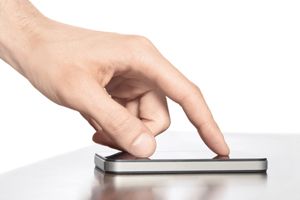A NEW smartphone app aimed at making clinical photography legally safe for doctors, patients and practices is just weeks away from release, according to the surgeon involved in its development.
Dr David Hunter-Smith, a plastic and reconstructive surgeon with Peninsula Health in Victoria, said the app would address the legal and security issues inherent in the booming use of smartphones in clinical situations.
News of the app coincides with an article published in this week’s MJA warning clinicians of their legal obligations regarding consent and privacy with clinical photography. (1)
The authors of the article, which included a lawyer and dermatologists, concluded that the medical and legal professions were playing catch-up with the technology.
They wrote that while there were many benefits with clinical photography, doctors had legal obligations regarding the storage of and access to photos, and that the photos could also be used in legal proceedings arising from patient complaints.
“As determined by federal law, patient information (including photographs) should not be collected for inclusion in a record unless it is necessary for the purpose for which it is collected; and in such cases the patient must be informed or be aware beforehand not only of the reason for the collection of the information, but also to whom it is likely to be disclosed”, the authors wrote.
“The obligations … may be very difficult to meet in the context of a busy clinical setting, and may seem burdensome … The Australian medical profession and legal system are facing the challenge of evolving with the same rapidity as the technology that has made clinical photography and electronic record sharing so integral to clinical practice today.”
Medical defence organisation Avant said all medical staff — clinical and administrative — should be aware that photos are part of a patient’s medical record.
Kate Gillman, Avant’s head of practice – civil (NSW), told MJA InSight that clinical photos were subject to the same privacy policies and professional regulation requirements as all other medical records.
The issue of clinical photography also attracted several letters to the latest issue of the MJA in response to an earlier article saying that a “click first, care later” culture was developing in medicine because of a failure to properly manage the burgeoning use of smartphones to take medical photos. (2)
Dr Jillian Tomlinson, the coauthor of one of the letters and a Victorian plastic, reconstructive and hand surgeon, told MJA InSight that the ethical, privacy and legal issues surrounding clinical photography were becoming a matter of urgency. (3)
“One hospital in Melbourne told its employees that they could not take photographs on their mobile phones or personal cameras, and that led many clinicians to wonder how this could be resolved”, Dr Tomlinson said.
“One of the answers may be software solutions or apps which both address the burden of consent and can then upload the photo to the hospital’s own medical records system.”
Dr Tomlinson said the Austin Hospital in Melbourne was trialling the use of mobile devices linked to the hospital’s internal system.
Dr Hunter-Smith said the smartphone app he was helping develop was an important step in smartphone photography, which he described as “incredibly efficient and it’s a really good tool”.
“But the reality is that often no written consent is obtained [for taking photos], the resulting photo is sent insecurely, either by SMS or email, and it ends up on a couple of open devices. The photo is not available to the patient either through Freedom of Information avenues or in their medical record.”
Dr Hunter-Smith said the app works by storing the photo within the app itself, rather than on the phone, and prompts the doctor to seek consent from the patient. This can be given in two ways — by the patient signing the screen, or by recording a verbal consent.
The photograph is stored securely on a website which requires login access.
“We’re confident we’ve addressed all the legal requirements and security measures”, Dr Hunter-Smith said.
– Cate Swannell
1. MJA 2013; 198: 48-49
2. MJA 2012; 197: 265
3. MJA 2013; 198: 21-22
Posted 21 January 2013

 more_vert
more_vert
As usual bureaucracy and rampant legalism trump traditional commonsense practice..mycosis
I’m all in favour of using images through sms and email for communication between clinicians in the manner as described by Catherine Sharp. Valid concerns are made about potential inappropriate use of clinical images. The vast vast majority of doctors utilise this mode of communication appropriately. I am, however, concerned when I see doctors on social media (particularly Twitter) who post de-identified images of pathology or radiology for entertainment purposes – it is interesting that these doctors tend to operate under pseudonyms rather than using their real names. Sadly, it only takes a few individuals to create the call of regulation.
Surely with photos “being worth a thousand words” and the use of such as a “teaching-tool”,clinicians making use of photos is …a given! Any arguments to the contrary will see clinicians ‘of my vintage’ giving teaching ‘the flick’!!
I am a Wound Consultant funded by a Medicare Local group to see residents in Residential Aged Care Facilities. I have always taken photos of wounds, cropped to hopefully deidentify, & emailed to GPs and / or used for education purposes as Power Point presentations.
Even though I have asked permission of the resident or relatives I have nothing in writing.
I am conscious that this is a potential minefield & would love to have a secure system.